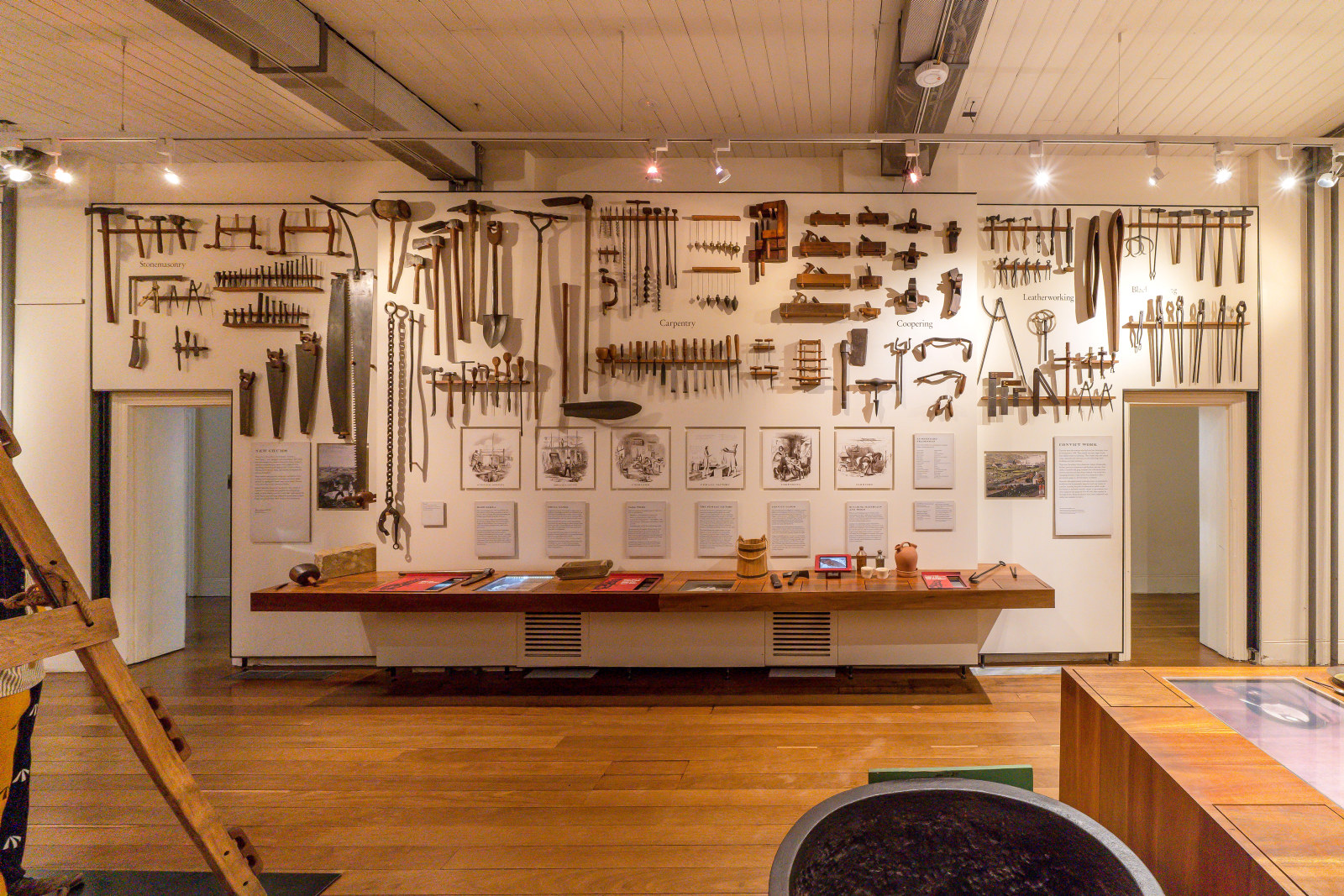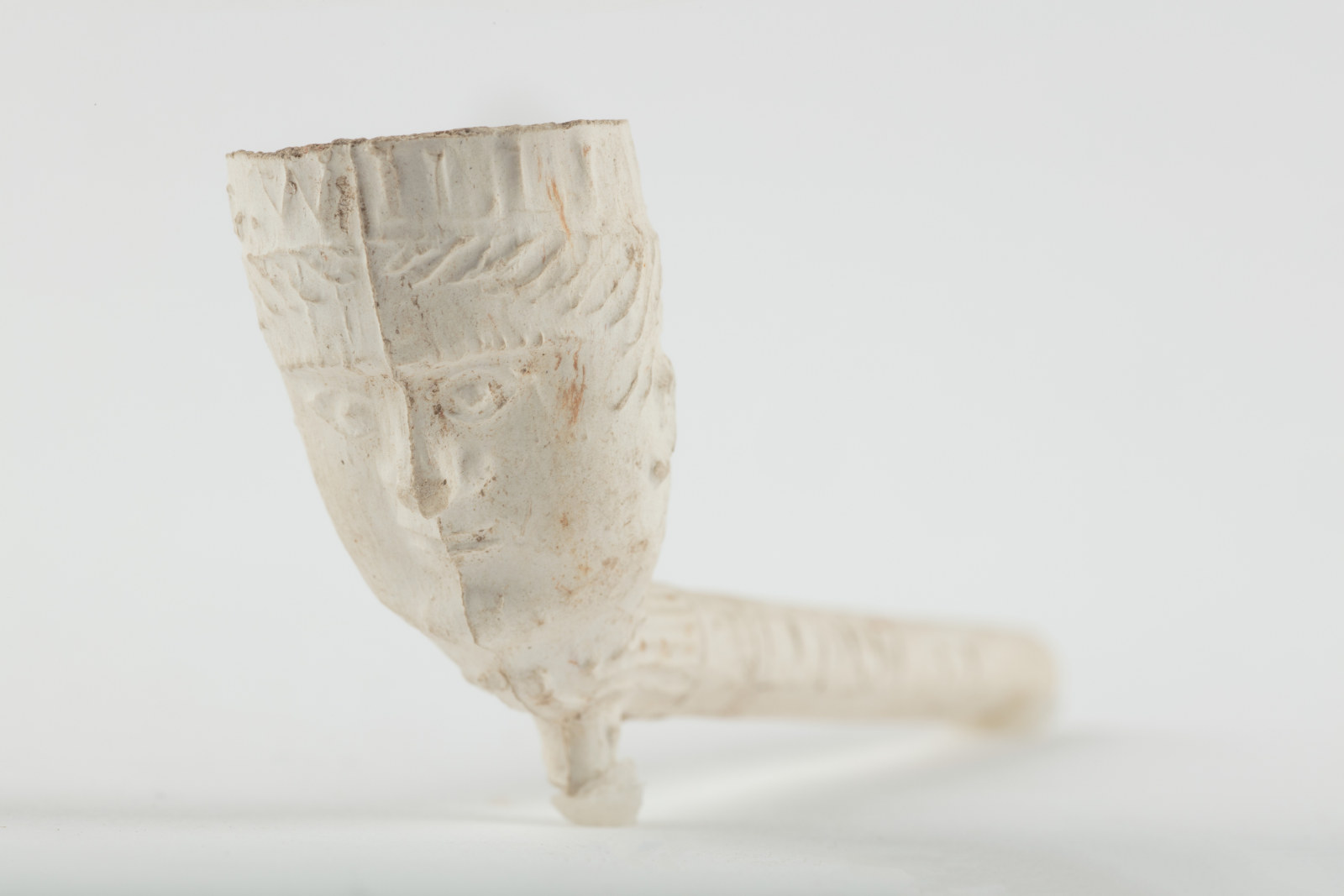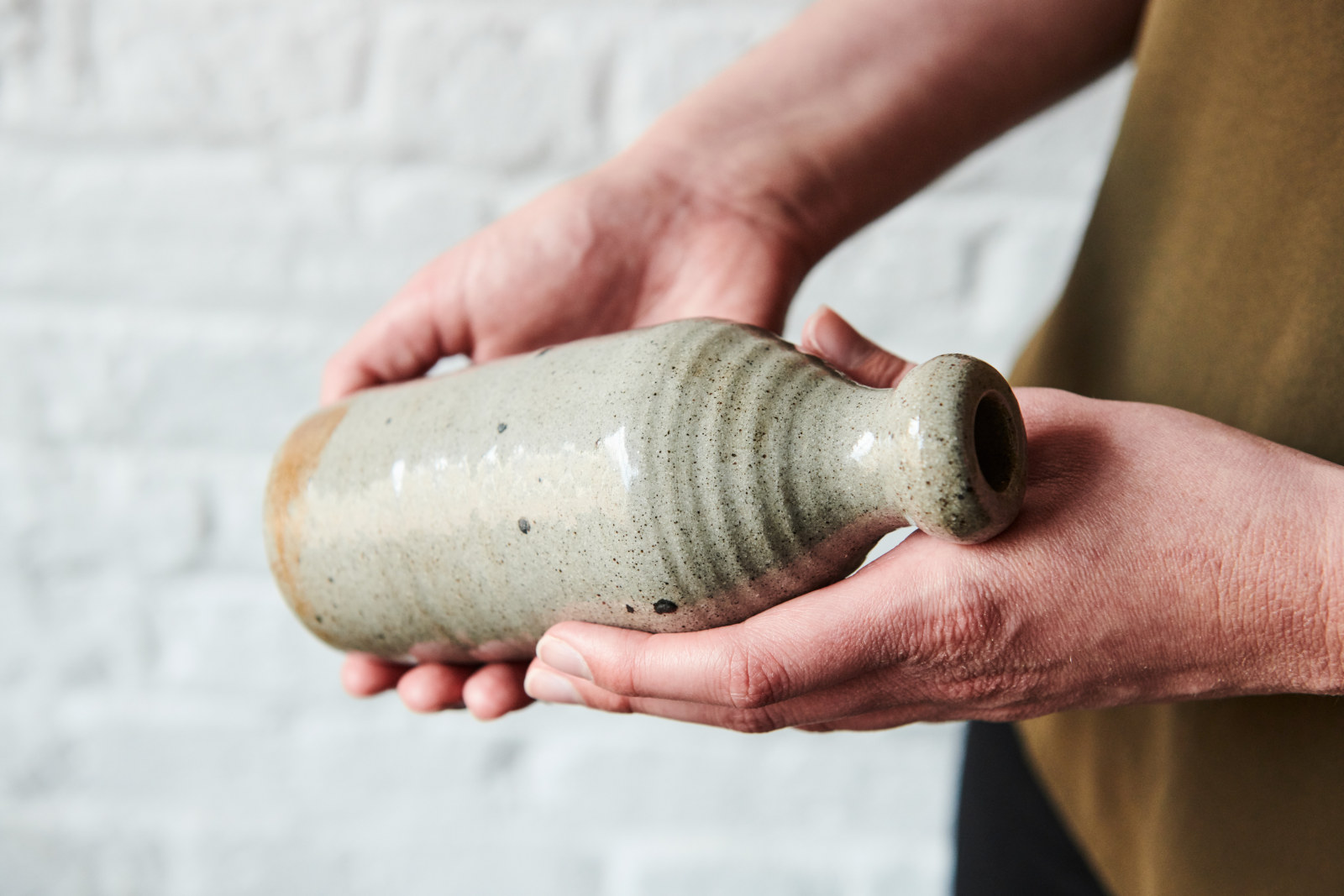Clay tobacco pipe
Jonathan Leak, 1826–1838
Known as steamers to the convicts, there were 1500 fragments of convict-era clay tobacco pipes like this one recovered by archaeologists from underfloor and underground areas of Hyde Park Barracks. Not just smoked by convicts, some were also made by convicts. A few, like this example, were marked with the moulded name ‘J. LEAK/SYDNEY’ - made by Jonathan Leak, who had been transported in 1819 at age 42 for burglary. As a trained potter from Staffordshire, Leak was put straight to work at the Government Pottery at Brickfield Hill, where he made a variety of earthenware pottery and tobacco pipes. For good behaviour he was granted his Ticket of Leave in 1822 and he set up his own pottery. Leak received his Conditional Pardon in 1828. Made from local clay pressed into a mould, this pipe was made after 1826, when Leak’s adult son Lewis arrived in the colony, and probably brought the new moulds with him.
Leak sold his pipes for four shillings per gross (144 pipes), which meant they cost 3 pence each. Even after the markup that the pubs and shops added, most convicts could certainly afford to buy them with the coins they had earned by working on Saturday afternoons, or by gambling and selling cabbage tree hats and stolen goods. Many convicts enjoyed smoking as a welcome relief from the brutality and drudgery of convict life. Tobacco, which convicts called weed, was not part of their rations but was also available to buy in the pubs and shops.
Published on
Related

Convict Sydney
Objects
These convict-era objects and archaeological artefacts found at Hyde Park Barracks and The Mint (Rum Hospital) are among the rarest and most personal artefacts to have survived from Australia’s early convict period

Up in smoke: clay tobacco pipes
From the earliest days of the colony, Sydney-siders smoked them, broke them, and discarded them into drains, rubbish piles, work sites and hidden cracks and crevices of buildings

Learning resources
Explore our range of online resources designed by teachers to support student learning in the classroom or at home